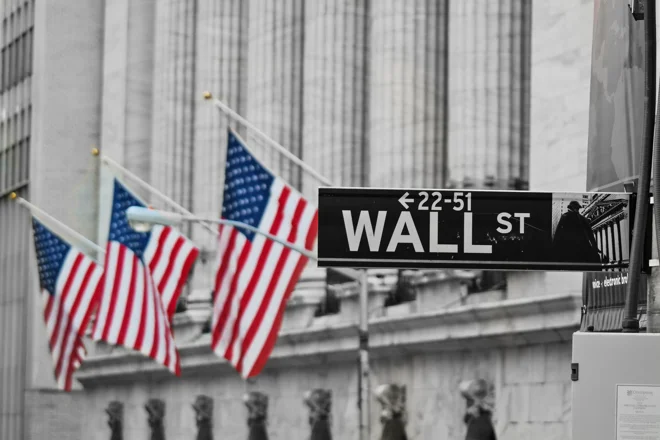WHAT YOU NEED TO KNOW
- With countries across the world confirming that their economies have entered recession, we examine the apparent dislocation between strong equity markets and the weak economic data
- Financial markets are forward-looking and are foreseeing economic improvement due to unprecedented fiscal support from governments and the significant monetary expansion from central banks
- Equity valuation techniques place limited emphasis on the impairment of near-dated cash flows, provided longer-term cash flows remain probable. Falling government bond yields also support equity prices.
The global Covid-19 pandemic has caused a sudden economic shock, abruptly reversing the positive economic outlook and leading to a rapid decline in global equity markets. However, since mid-March, global equities have rebounded by 24% and are now just 15% below their 1 January level. With countries across the world confirming that their economies have entered recession, we examine the apparent dislocation between strong equity markets and the weak economic data.
FINANCIAL MARKETS ARE FORWARD LOOKING
First, it is important to remember that the financial markets are forward-looking and will try to discount the medium-term economic path. Remember that in the week commencing 9 March, when global equity markets fell 12%, economic data remained robust with new weekly US jobless claims below 300,000 – perfectly sanguine compared to the 20 million that would be recorded in the subsequent four weeks of April. Back in March, as equity markets tumbled, they were predicting the dire economic data that we are now currently experiencing. Financial markets are still forward-looking, and rallying equity markets point to a future improvement in economic data as we move from “despair” to “repair”. This data will likely be supported by the success of the social distancing measures that have lowered the number of new Covid-19 cases in Europe and the US, as well as the unprecedented fiscal support from governments and the significant monetary expansion from central banks. The forward-looking nature of financial markets partially explains the apparent dislocation between strong equity markets and the economic data.
IMPAIRING NEAR-DATED CASH FLOWS HAS A LIMITED IMPACT ON EQUITY VALUE
Second, the loss of one year’s earnings is not financially material for a business that is structurally intact, as most of the value of a company is retained over the long term. To support this assertion, we use a common valuation framework called a discounted cash flow model (DCF). The DCF projects a company’s future cash flows, and then estimates their current fair value, which is equivalent to buying the shares. The DCF process involves discounting the value of the future cash flows using benchmark interest rates and company-specific risk. In our simplified example, we project cash flows for each of the next five years at USD 10 and create a “terminal value” using a discount rate of 5% and a long-term growth rate of 1%. As evidenced in the chart, the bulk of the value lies in the company’s long-term cash flow generation. Even setting the entirety of the first two years of cash flows to zero, a plausible scenario as Covid-19 shutdowns curtail economic activity, only reduces the fair value of the company by 8%.
Consequently, as financial markets look forward to a future economic recovery, even the current dire economic conditions – if short-lived – should only have a limited impact on the price of risk assets. This partially explains the apparent dislocation between strong equity markets and the economic data.
The DCF is a staple model of equity research analysts and fund managers and it possess numerous interesting characteristics. For high-growth companies, a greater proportion of company value is retained over the long term. Setting the long-term growth rate to 3% rather than 1% not only increases the fair equity value of the company by more than 80%, but it also reduces the share of value contained within the first two years’ worth of cash flows from 8% to 4%. When viewing the equity market through the DCF lens, it becomes clear why, in a time where near-dated cash flows are impaired, sectors and companies deemed “high growth” – such as our overweight in the information technology sector - are outperforming their lower growth peers. This reveals why certain information technology companies have become more expensive when measured by the price-earnings ratio, and why the Nasdaq stock index has risen and is now up year-to- date. This importance of long-dated cash flows to equity value for growth-orientated companies explains the apparent dislocation between strong equity markets and the economic data.
The DCF is also sensitive to the discount rate. If interest rates fall, then the attractiveness of holding cash or short- term bonds instead of equities also declines. In periods of high interest rates, the value of receiving cash flows in the future diminishes and the opposite occurs in periods of low interest rates. Flexing our illustrative DCF by adjusting the discount rate between 10% and 2%, but keeping the long-term growth constant at 1%, demonstrates that the fair value of equity increases when interest rates decline. Year-to-date the 10-year yield on US Treasuries has fallen from a peak of 1.91% to 0.64%. This move should increase the price investors are willing to pay for equities. Declining interest rates and discount rates partially explain the apparent dislocation between strong equity markets and the economic data.
EQUITY MARKETS AND THE ECONOMY HAVE VERY DIFFERENT COMPOSITIONS
Third, the composition of the equity markets is very different to the composition of GDP, with equity markets enjoying a far greater weighting to technology and healthcare. In our view, the Covid-19 crisis has condensed two or three years’ worth of structural transition from a physical to digital economy into just two months. The shift to digital from physical has benefited companies that typically exhibit high margins, low capex and – once again - higher long-term growth rates. The difference between equity market and GDP composition and the equity market’s “overweight” to the “winners” from Covid-19 partially explains the apparent dislocation between strong equity markets and the economic data.
We feel comfortable that we can explain the apparent dislocation and retain a tactical asset allocation with a “risk-on” bias. However, we acknowledge there is still considerable risk for highly impacted sectors because the economic recovery is likely to be slow and there are companies that will experience weak cash flows for an extended period. Sectors such as travel and leisure, retail, banks, automotive, and commercial real estate have, to varying extents, been afforded liquidity support from central governments. However, prolonged economic weakness may cause these sectors to transition from a liquidity crisis to a solvency crisis.
STAYING INVESTED
All major crises appear to be buying opportunities for long-term investors when looked at with the benefit of hindsight. We think that Covid-19 should be an acute, rather than structural, episode. Once Covid-19 is contained, and ultimately medically managed, the economy is likely to return to a favourable economic trajectory and shift from its current “despair” to a “repair” phase. We believe in the value of remaining invested in financial markets, especially in periods of elevated risk premiums, and within our equity selection we seek structural winners that benefit from strong secular trends that are likely to be rewarded over the longer term.
COVID-19 WATCH
Globally confirmed cases of Covid-19 exceeded 4.7 million, up from approximately 4 million seven days previously. Last week, China – the virus’ believed country of origin – confirmed fewer than 100 new Covid-19 cases, and consequently dropped out of the top 10 countries for confirmed cases. In contrast, last week, the US experienced more than 100,000 new Covid-19 cases and the US now accounts for approximately one in three confirmed cases worldwide.
Despite regularly posting in excess of 20,000 new cases per day, over half of the US’s 50 states have legislatively reopened. They have done so in differing ways. For example, Texas allowed a stay-at-home order to lapse on 30 April, while Utah downgraded the risk to “orange”, a move that enabled gyms and hair salons (and certain other businesses) to reopen from 1 May.
To analyse the US from an investment perspective, we start by decomposing the country into its composite states. Of the US’s approximately 1.5 million confirmed Covid-19 cases, the state of New York has the largest number, with approximately 350,000 confirmed cases. Removing New York from the US data reveals that while the New York pandemic has been brought under control, daily cases remain elevated elsewhere in the US. This highlights the risk of a “second wave” in the US as social distancing measures are relaxed.
We assess the risk of a second wave by using high frequency data to assess the impact of state reopening. Mobility data provided by Google gives an evidence- based view on economic activity and citizens’ movements. For example, when we track mobility solely at US retail and recreation locations, we observe that footfall is 30% lower than the baseline (the five-week period ending 6 February). However, activity has already picked up compared to mid-April, when the corresponding footfall figures were down by more than 50% compared to the baseline.
Using these data we can compare New York to the rest of the United States. We observe, in keeping with the severity of the New York pandemic, that, in New York, retail and recreation activity declined to a greater extent than elsewhere in the US, with footfall in mid-April declining 75% compared to the baseline.
This creates a juxtaposition. On the one hand, New York retail and recreation activity has not yet recovered and remains 20 percentage points lower, relative to the baseline, than the US overall. However, simultaneously, New York is exhibiting superior Covid-19 containment dynamics as New York now only accounts for 10% of new daily US Covid-19 cases, having been almost 50% in late February. This suggests that New York may be less likely to suffer a “second wave” than other areas of the US. We will be closely watching Covid-19 dynamics outside New York for any evidence of a “second wave”, as social distancing measures are relaxed.
As economies begin to re-open, for us as investors, understanding which economies are adequately prepared to monitor and respond to localized outbreaks is crucial. These data enable us to calculate the likelihood of a “second” wave, and of further economic shutdowns. Further economic shutdowns would significantly negatively impact risk assets, such as our overweight positions in USD emerging market sovereign credit and EUR high-yield credit.
Authors:
Bill Street - Group Chief Investment Officer
Amrendra Singh
James Purcell
This document has been prepared by Quintet Private Bank (Europe) S.A. The statements and views expressed in this document – based upon information from sources believed to be reliable – are those of Quintet Private Bank (Europe) S.A. as of May 18, 2020, and are subject to change. This document is of a general nature and does not constitute legal, accounting, tax or investment advice. All investors should keep in mind that past performance is no indication of future performance, and that the value of investments may go up or down. Changes in exchange rates may also cause the value of underlying investments to go up or down. Copyright © Quintet Private Bank (Europe) S.A. 2020. All rights reserved.





